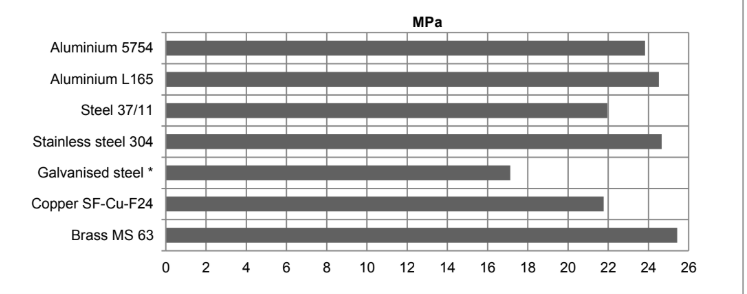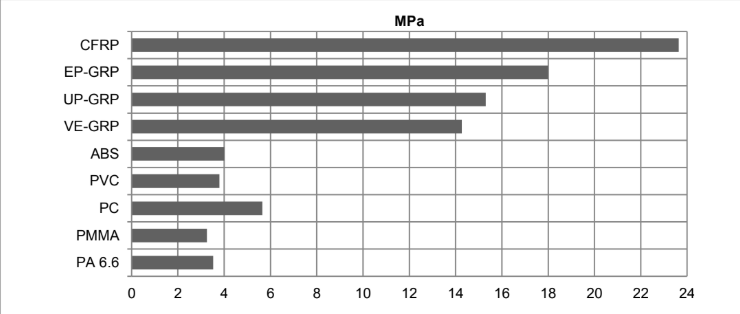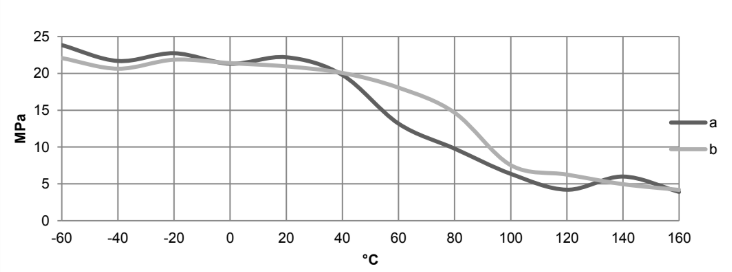Enhanced TDS
Identification & Functionality
Features & Benefits
- Ready-to-Use Product Features
- Product Features
- Toughened paste adhesive
- Ideal for bonding GRP, SMC and dissimilar substrates
- Gap filling, non-sagging up to 10mm thickness
- Good resistance to environmental conditions
- Temperature resistance to 100°C
- Resistant to dynamic loading
- High gap-filling properties
- Toughened formulation
Applications & Uses
- Application Area
- Compatible Substrates & Surfaces
- Markets
- Applications
- Product Applications
- Metal and composite parts
- Composite structures in harsh environments
- Door assemblies in railway carriages
Properties
- Physical Form
- Typical cured properties
The data shown below is provided solely as technical information and does not constitute a product specification. Unless otherwise stated, the figures given below were determined by testing standard specimens made by lap-jointing 100 x 25 x 1.6 mm strips of sandblasted aluminium alloy. The bond area was 12.5 x 25 mm, with bonded specimens cured under light clamping pressure. Lap shear testing was carried out at 23°C at 10mm/min unless otherwise stated.
Average lap shear strengths of typical metal-to-metal joints (ISO 4587; typical average values)
Cured 16 hours at 40°C and tested at 23°C . Pretreatment: sandblast + degrease
* galvanised steel: degrease only
Average lap shear strengths of typical plastic-to-plastic joints (ISO 4587; typical average values)
Cured 16 hours at 40°C and tested at 23°C. Pretreatment: light abrasion + degrease.
Lap shear strength versus temperature (ISO 4587; typical average values)
Aluminium 5754, pretreatment: sandblast + degrease. Cure a: 16 hrs at 40°C, Cure b: 24 hours RT + 1 hour 80°C
DMA (Dynamic Mechanical Analysis ISO 6721; typical average values)
Cure a: 16 hours 40°C
Tg midpoint 75°C Shear modulus -40°C 1385 MPa Shear Modulus 23°C 861 MPa Shear Modulus 50°C 577 MPa Shear Modulus 75°C 29 MPa Shear Modulus 100°C 10 MPa Shear Modulus 125°C 10 MPa Cure b: 24 hours RT + 1 hour 80°C
Tg midpoint 82°C Shear modulus -40°C 1385 MPa Shear Modulus 23°C 836 MPa Shear Modulus 50°C 567 MPa Shear Modulus 75°C 91 MPa Shear Modulus 100°C 11 MPa Shear Modulus 125°C 10 MPa Tensile Properties (ISO 527; typical average values) Cure 16 hours at 40°C, tested at 23°C
Tensile modulus 1720 MPa Tensile strength 29 MPa Elongation at break 8.5 % Compressive Properties (ISO 604; typical average values) Cure 16 hours at 40°C, tested at 23°C
Compressive modulus 1920 MPa Maximum compressive strength 105 MPa Strength at break 100 MPa Hardness (ISO 868; typical average values) Cure 16 hours at 40°C, tested at 23°C
Shore D hardness 76 Lap shear strength versus immersion in various media (ISO 4587; typical average values) Aluminium 5754, cured 16 hours at 40°C and tested at 23°C . Pretreatment: sandblast + degrease

Lap shear strength versus heat ageing at 70°C (ISO 4587; typical average values) Aluminium 5754, cured 16 hours at 40°C and tested at 23°C. Pretreatment: sandblast + degrease Heat aging at 70°C

Lap shear strength versus tropical weathering (DIN 50015; typical average values) Aluminium 5754, cured 16 hours at 40°C and tested at 23°C. Pretreatment: sandblast + degrease Tropical weathering: 40°C, 92% relative humidity

Lap shear strength versus cataplasma ageing (ISO 9142 E2; typical average values) Aluminium 5754, cured 16 hours at 40°C and tested at 23°C. Pretreatment: sandblast + degrease

Regulatory & Compliance
Technical Details & Test Data
- Processing Conditions
- Pretreatment: The strength and durability of a bonded joint are dependent on proper pretreatment of the surfaces to be bonded. At the very least, joint surfaces should be cleaned with a good degreasing agent such as methoxy propanol, acetone or other proprietary degreasing agents to remove all traces of oil, grease and dirt. Low grade alcohol, gasoline (petrol) or paint thinners should never be used. The strongest and most durable joints are obtained by either mechanically abrading or chemically etching (“pickling”) the degreased surfaces. Abrading should be followed by a second degreasing treatment prior to bonding.
- Application of adhesive: The resin/hardener mix may be applied manually or using automated application to pretreated surfaces ready for bonding. Huntsman's technical support group can advise further on surface pre-treatments as well as suitable application methods and dispensing equipment. An adhesive bond thickness of 0.1 to 0.30 mm will typically impart the greatest lap shear strength to a joint. Proper adhesive joint design and surface preparation is critical to produce a durable bond. The bonded components should be assembled and held in a fixed position as soon as the adhesive has been applied, at least until the handling strength is reached (handling strength considered as 1MPa lap shear strength – see table below).
Temperature (°C) 10 15 23 40 60 100 Cure time to reach (hours) 9 6 4 - - - LSS > 1MPa (minutes) - - - 65 20 5 Cure time to reach (hours) 28 12 7 - - - LSS > 10MPa (minutes) - - - 120 50 10 LSS = Lap shear strength.
- Equipment maintenance: Tools should be cleaned using a suitable solvent, such as methoxy propanol or acetone, before adhesive residues have had time to cure. Removal of cured residues with solvents is not possible, and mechanical abrasion must be used. If solvents are used for cleaning, operatives should take the appropriate precautions and, in addition, avoid skin and eye contact.
Safety & Health
- Handling Precautions
Our products are generally quite harmless to handle provided that certain precautions normally taken when handling chemicals are observed. The uncured materials must not, for instance, be allowed to come into contact with foodstuffs or food utensils, and measures should be taken to prevent the uncured materials from coming in contact with the skin, since people with particularly sensitive skin may be affected. The wearing of impervious rubber or plastic gloves will normally be necessary; likewise the use of eye protection. The skin should be thoroughly cleansed at the end of each working period by washing with soap and warm water. The use of solvents is to be avoided. Disposable paper - not cloth towels - should be used to dry the skin. Adequate ventilation of the working area is recommended. These precautions are described in greater detail in the Material Safety Data sheets for the individual products and should be referred to for fuller information.
- Storage Conditions
ARALDITE® 2015-2 Adhesive should be stored at room temperature in the original sealed containers, kept in a dry place protected from extremes of temperature and strong sunlight. The expiry date is indicated on the individual container labels.
Packaging & Availability
- Packaging Type
Other
- Appearance
- Beige paste
- Application Information
Value Units Test Method / Conditions Fixture Time 4.0 h h at room temperature Mix Ratio 100:100 pbw pbw - Mechanical Properties
Value Units Test Method / Conditions Tensile Strength 29.0 MPa MPa - Physical Properties
Value Units Test Method / Conditions Specific Gravity approx. 1.4 -
